
Ivor Novello was a Welsh actor, dramatist, singer and composer who became one of the most popular British entertainers of the first half of the 20th century.

The Lodger: A Story of the London Fog is a 1927 British silent thriller film directed by Alfred Hitchcock and starring Marie Ault, Arthur Chesney, June Tripp, Malcolm Keen and Ivor Novello. Hitchcock's third feature film, it was released on 14 February 1927 in London and on 10 June 1928 in New York City. The film is based on the 1913 novel The Lodger by Marie Belloc Lowndes and the play Who Is He? co-written by Belloc Lowndes. Its plot concerns the hunt for a Jack the Ripper-like serial killer in London.
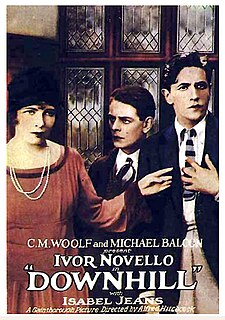
Downhill is a 1927 British silent drama film directed by Alfred Hitchcock, starring Ivor Novello, Robin Irvine and Isabel Jeans, and based on the play Down Hill by Novello and Constance Collier. The film was produced by Gainsborough Pictures at their Islington studios. Downhill was Hitchcock's fourth film as director, but the fifth to be released. Its American alternative title was When Boys Leave Home.

Robert Tobias "Bobbie" Andrews was a British stage and film actor. He is perhaps best known as the long-term companion of Ivor Novello.
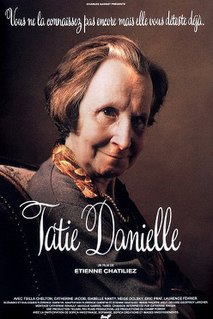
Tatie Danielle is a 1990 French black comedy film directed by Étienne Chatiliez. It features Tsilla Chelton as Auntie Danielle Billard.

Constance Collier was an English stage and film actress and acting coach. She wrote hit plays and films with Ivor Novello and she was the first person to be treated with insulin in Europe.

Gormenghast is a four-episode television serial based on the first two novels of the Gothic fantasy Gormenghast series by Mervyn Peake. It was produced and broadcast by the BBC.

Isabel Jeans was an English stage and film actress known for her roles in several Alfred Hitchcock films and her portrayal of Aunt Alicia in the 1958 musical film Gigi.

Nina Yazykova Kind Hakim Provatoroff, known by her stage name of Nina Vanna, was a Russian-born British film actress who appeared in a number of silent films during the 1920s.
John Henry Graham Cutts, known as Graham Cutts, was a British film director, one of the leading British directors in the 1920s. His fellow director A. V. Bramble believed that Gainsborough Pictures had been built on the back of his work.
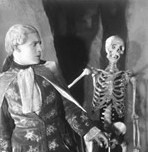
The Man Without Desire is a 1923 British silent film fantasy drama, directed by Adrian Brunel and starring Ivor Novello, who also co-produced the film along with Miles Mander. The film was Brunel's feature-length directorial debut and has been described as "one of the stranger films to emerge from Britain in the 1920s". The film's theme of loss of sexual desire, and by implication impotence, was exceptionally frank for its time; oddly, however, it appears to have been passed for release without interference by the British film censors, who at this time had a reputation for extreme zealousness where sexual matters in film were concerned.
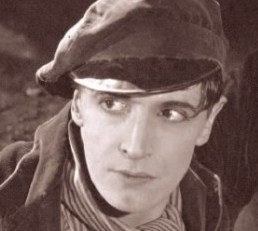
The Rat is a 1925 British silent film drama, directed by Graham Cutts and starring Ivor Novello, Mae Marsh and Isabel Jeans. The film is based on the 1924 play of the same title written by Novello and Constance Collier, set in the Parisian criminal underworld. The film's louche settings and melodramatic storyline proved popular with audiences, and its success spawned two sequels, The Triumph of the Rat (1926) and The Return of the Rat (1929).
The Return of the Rat is a 1929 British silent drama film directed by Graham Cutts and starring Ivor Novello, Isabel Jeans and Mabel Poulton. It was made by Gainsborough Pictures at their Islington Studios. It was also released with a music-and-effects soundtrack for cinemas wired for sound.
Sleeping Car is a 1933 British romantic comedy film directed by Anatole Litvak and starring Madeleine Carroll, Ivor Novello and Laddie Cliff.

The Bohemian Girl is a 1922 British romance film directed by Harley Knoles and starring Gladys Cooper, Ivor Novello, and C. Aubrey Smith. It was inspired by the opera The Bohemian Girl by Michael William Balfe and Alfred Bunn, which was in turn based on a novel La Gitanilla by Miguel de Cervantes. Originally released at 70 minutes, the surviving print is missing the first two reels and small portion of the last, timing at 46 minutes.

I Lived With You is a 1933 British romantic comedy film directed by Maurice Elvey and starring Ivor Novello, Ursula Jeans and Ida Lupino. It is based on the West End hit play I Lived With You by Novello.
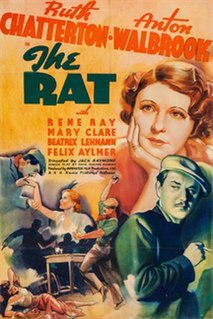
The Rat is a 1937 British drama film directed by Jack Raymond and starring Anton Walbrook, Ruth Chatterton, and René Ray. It is based on the play The Rat by Ivor Novello which had previously been made into a 1925 film The Rat starring Novello. It was made at Denham Studios by Herbert Wilcox Productions.
Miarka or Miarka: The Daughter of the Bear is a 1920 French silent drama film directed by Louis Mercanton and starring Ivor Novello. The film is also known by the alternative title of Gypsy Passion. It was shot on location in the Camargue region. It was based on a novel by Jean Richepin which was later turned into a sound film of the same name.
The Rat is a play by the British writers Ivor Novello and Constance Collier which first premiered in 1924. It ran for 282 performances in its original West End run, initially at the Prince of Wales Theatre before transferring to the Garrick Theatre. Novello himself starred as the title character, an Apache dancer who frequents Paris nightclubs. The cast also included James Lindsay and Isabel Jeans. On Broadway it enjoyed a run of 126 performances at the Colonial Theatre.














